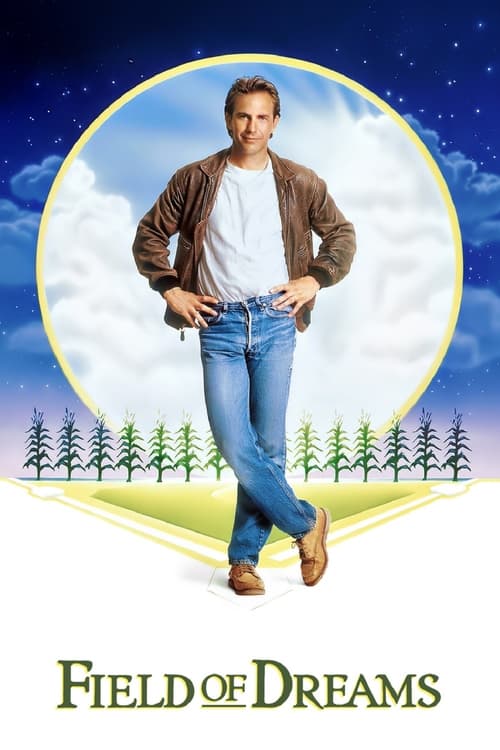
Title: Field of Dreams
Year: 1989
Director: Phil Alden Robinson
Writer: Phil Alden Robinson
Cast: Kevin Costner (Ray Kinsella),
Amy Madigan (Annie Kinsella),
Gaby Hoffmann (Karin Kinsella),
Ray Liotta ("Shoeless" Joe Jackson),
Timothy Busfield (Mark),
Runtime: 107 min.
Synopsis: Ray Kinsella is an Iowa farmer who hears a mysterious voice telling him to turn his cornfield into a baseball diamond. He does, but the voice's directions don't stop -- even after the spirits of deceased ballplayers turn up to play.
Rating: 7.1/10
Whispering Ghosts in the Corn: The Timeless Allure of Field of Dreams
/10
Posted on July 19, 2025
Field of Dreams (1989), directed by Phil Alden Robinson, is a cinematic elegy that transforms a simple Iowa cornfield into a sacred space where memory, regret, and hope converge. Adapted from W.P. Kinsella’s novel Shoeless Joe, the film’s screenplay is its heartbeat, weaving a delicate balance of magical realism and human longing. The narrative follows Ray Kinsella (Kevin Costner), a farmer who hears a spectral voice urging him to build a baseball field, an act that summons ghostly players and unresolved familial wounds. The screenplay’s strength lies in its restraint; it trusts the audience to embrace its fantastical premise without overexplaining, allowing emotional resonance to trump logic. Yet, this same trust occasionally falters, as the script sidesteps deeper exploration of Ray’s wife, Annie (Amy Madigan), whose underdeveloped arc feels like a missed opportunity to ground the story’s mysticism with richer domestic stakes.
Costner’s performance is the film’s emotional anchor, his everyman sincerity radiating a quiet vulnerability that makes Ray’s leap of faith credible. His chemistry with James Earl Jones, as the reclusive writer Terence Mann, elevates their scenes into a meditation on lost dreams and second chances. Jones’s gravitas, especially in his iconic “people will come” monologue, imbues the film with a mythic weight, though the speech risks tipping into sentimentality, saved only by its earnest delivery. The ensemble, including Ray Liotta as Shoeless Joe Jackson, complements this tone, with Liotta’s understated intensity lending the ghostly players a haunting authenticity.
Cinematographer John Lindley’s work is a triumph, capturing the Iowa landscape with a golden, almost otherworldly glow. The cornfields, framed in wide shots, become a character themselves both a barrier and a portal, their rustling whispers echoing the film’s supernatural undertones. The camera’s gentle pans across the diamond, bathed in twilight, evoke a nostalgia that feels universal yet intimate. However, the film’s pacing occasionally stumbles; the second act lingers too long on Ray’s quest, diluting the urgency of his personal stakes. James Horner’s score, while evocative, leans heavily on swelling strings, sometimes overwhelming subtler moments that needed space to breathe.
Field of Dreams endures because it dares to explore the irrational pull of dreams against the pragmatism of life. Its Iowa setting, far from Hollywood’s gloss, roots the story in a tactile reality, making its leaps into the fantastical all the more poignant. The film’s flaws underdeveloped supporting characters and occasional narrative drift are overshadowed by its ability to make the viewer believe in the impossible, if only for a moment in the corn.
0
0
